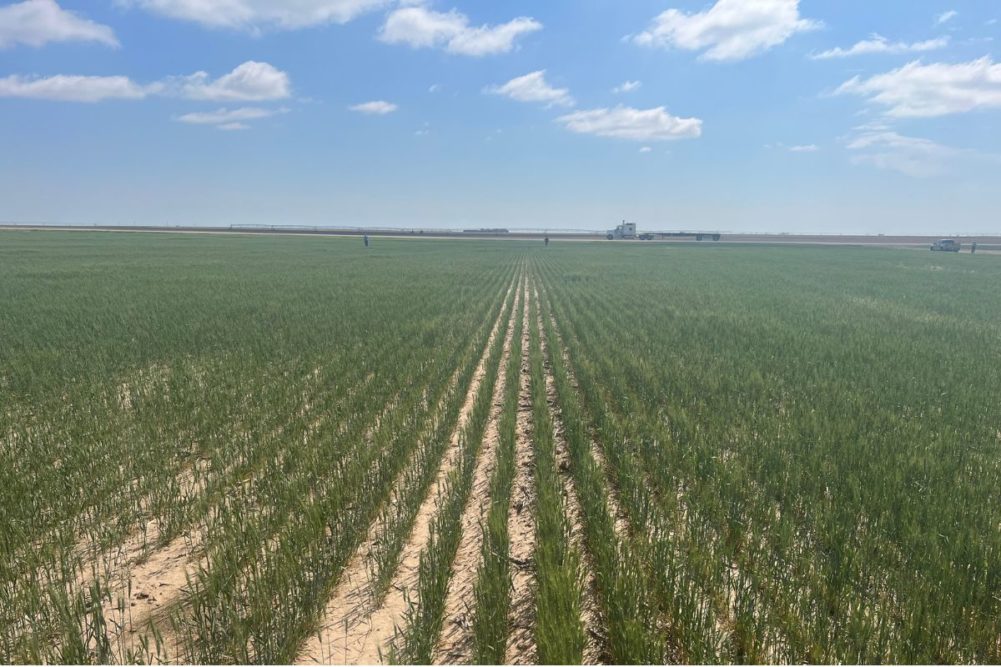WICHITA, KANSAS, US — Another day, another look at an inconsistent hard red winter wheat crop showing the effects of scanty moisture during most of its development.
Scouts on the 2023 hard winter wheat tour put in another full day of crop appraisal and measurement on May 17, this time focusing on western and southern Kansas. More than 100 professionals took part. Included were scouts from all along the wheat value chain — growers, traders, millers and bakers, plus folks from agronomy, milling and satellite mapping programs at several US universities, government agriculture workers and media members.
The group departed Colby, Kansas, US, at dawn in groups of four, heading south or west with a mission to calculate a bushels-per-acre yield estimate for wheat fields in each Kansas county. The task proved difficult for some cars along select color-coded routes due to the sheer number of fields in which winter wheat already had been terminated.
During the traditional car reports presented the evening of Day 2 in Wichita, several speakers said their cars had trouble finding wheat and, in some cases, drove vast stretches of southern Kansas seeing no fields to measure. Still, plenty of field stops were made and Day 2 reports continued to reflect a highly variable crop growing during a second consecutive year of drought.
Many reports indicated the fields in the roughest shape could generate yields from 10 bushels to 20 bushels per acre. Southwestern Kansas fields near Liberal, Kansas, US, were particularly poor and were projected to have yields as low as 11 bushels an acre. At the same time, a scout reported far better yields estimates, 64 and 45 bushels an acre, in fields close to Wichita.
The yellow route dipped south in northern Oklahoma for a stretch. One report on the route indicated “east of Alva, things completely changed, yields went up to a 29-to-53-bushel-per-acre (bpa) range, and the best wheat was seen in northern Grant County, Oklahoma, US.”
Red route findings continued the variability theme noting “62 bpa fields and 32 bpa fields just a mile apart, which generated conversations about farm management choices and seed choices.”
Several cars were able to meet and speak with the farmer while measuring his field. A green route car met up with a grower who went all in on hard white winter wheat and planted 100% of his wheat rotations with the variety. Unfortunately, the farmer said about 50% of that was expected to be a loss. Another green route speaker had better news, reporting “waist-high wheat near Leoti, Kansas, US, the way it’s supposed to look like.”
Each car’s average bpa estimate was tallied and divided by Rita Ott, General Mills. For Day 2, the average yield estimate was 27.5 bpa based on 276 field stops compared with 37 bpa based on 254 field stops on Day 2 of the 2022 tour. That brought the present tour two-day average to 28.7 bpa as an average estimated yield based on 594 stops compared with the 2022 two-day average of 38.2 bpa calculated from 502 field stops.
The tour continues May 18 between Colby and Manhattan, Kansas, US, and will conclude mid-day with final reports and full-tour yield estimate.




